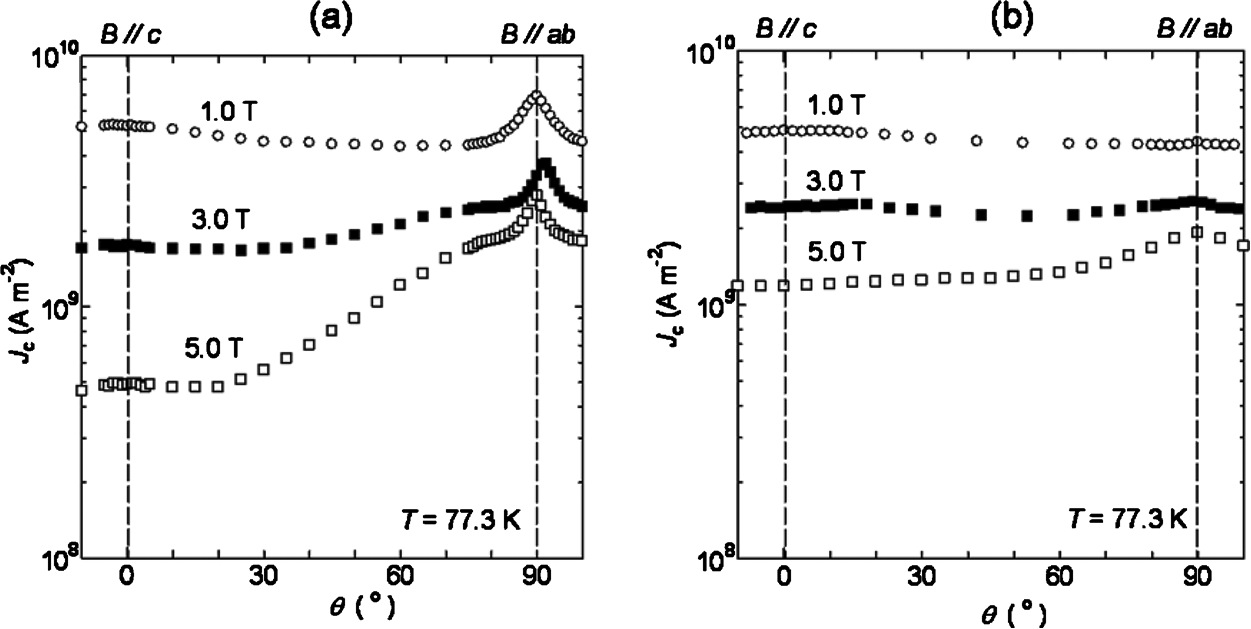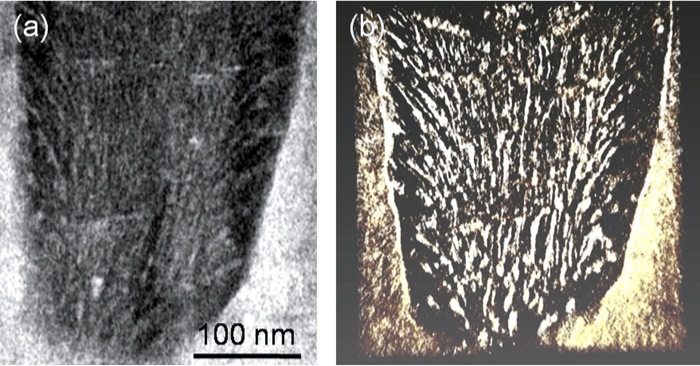磁束ピン止め点の三次元可視化 / Characterization of pinning centers in 3D at nanoscale
希土類系高温超伝導体(REBCO)は高い臨界温度と臨界電流密度(Jc)を有する超伝導体です。
この超伝導体に磁束ピン止め点が導入されることにより、高磁場中でのJc特性の改善が可能となります。
磁束ピン止め点には大別すると自然に材料中に含まれる粒界や欠陥といった天然の磁束ピン止め点と、
意図的に添加物を加えることにより導入することが可能となる析出物などからなる人工の磁束ピン止め点の2種類があります。
また、これらの磁束ピン止め点には、次元の異なる点欠陥(0次元)から線欠陥(1次元)、面欠陥(2次元)、体積欠陥(3次元)などが存在し、
その形態や分散状態がJc特性に大きく影響を及ぼすことが知られています。
これらの磁束ピン止め点を透過型電子顕微鏡と電子線トモグラフィ法を複合させることにより、
立体的に可視化し超伝導特性との相関を解明することに成功しています。
Rare-earth barium-copper-oxides (REBCO) are the type of superconductors with high critical temperatures and high critical current densities. Superconducting properties under high magnetic field can greatly be improved by introducing pinning centers into REBCOs. There are two types of pinning centers available, one is natural one naturally present within REBCOs such as grain boundaries and defects, and another one is artificial one which can intentionally be introduced as precipitates at nanoscale. Superconducting properties are strongly dependent on the distribution and dispersion of these pinning centers, so that it is essential to investigate them in three dimensions by electron tomography, the combination of transmission electron microscopy and computed tomography.


Properties and Microstructures of REBCO